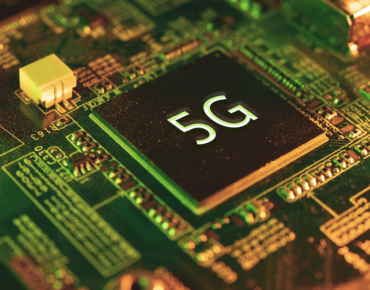Xilinx Teams with Fujitsu on 5G O-RAN

via Shutterstock
As the first “greenfield” or new-from-the-ground-up 5G wireless networks are being built, chip makers are joining cloud vendors in accelerating the rollout of front-end radio units that comply with emerging open radio access network specs.
Partners Fujitsu Ltd. and Xilinx Inc. this week joined a growing list of Open Radio Access Network (O-RAN) developers, announcing that Fujitsu will incorporate the FPGA vendor’s UltraScale+ technology in its 5G radio units. Xilinx (NASDAQ: XLNX) said the resulting macro sites will be among the first O-RAN-compliant 5G greenfield networks in the U.S.
Fujitsu (OTCMKTS: FJTSY) is also evaluating Xilinx low-power RF SoC technology for future deployments. As the pace of 5G deployments accelerates, Xilinx said its RF devices would help Fujitsu “address the evolution of standards for next-generation radio deployments.”
The partners said Thursday (Feb. 4) they expect to deploy the first greenfield 5G O-RAN systems later this year.
RF front ends are seen as a key component of 5G wireless deployments. That's resulting in FPGA specialists like Xilinx offering a range of options covering small to macro cell radios in the marketplace, including the company's UltraScale+ family featuring multiprocessor and RF SoCs. The chip maker says their programmability will allow network carriers to adapt to emerging 5G standards such O-RAN as traditional telecom networks are disaggregated.
Fujitsu announced this past December it would supply Japanese telecom operator KDDI Corp. (OTCMKTS: KDDIY) with O-RAN-compatible radio units as part of a virtualized base station framework scheduled to be deployed in Japan later this year.
The O-RAN specification was developed by the Open Radio Access Network Alliance as a possible industry standard for next-generation wireless networks. The combination of low-latency, high-bandwidth networks along with cloud-native technologies are seen as enabling a wave of edge and AI-based applications, including factory automation and autonomous driving.
Some 5G greenfield networks have been deployed, most notably by Japanese retailer Rakuten and the DISH Network in the U.S. Rakuten’s network relies on a “small cell” approach that is promoted as better suited to delivering 5G bandwidth, throughput and low latency needed for internet of things and other edge applications.
Meanwhile, cloud giants Amazon Web Services (NASDAQ: AMZN), Google (NASDAQ: GOOGL) and Oracle (NYSE: ORCL) are partnering with 5G network operators seeking to leverage O-RAN components needed to support enterprise AI and edge workloads.
For example, Google Cloud announced in January is it working with equipment vendor Nokia (NYSE: NOK) to advance cloud-native 5G edge services built around Google’s Anthos platform along with the cloud provider’s AI, machine learning and analytics tools.
Among other chip manufacturers, Intel Corp. announced this past November it is working with DISH network on a virtualized, O-RAN 5G deployment based on it hardware and software reference architecture.
Related
George Leopold has written about science and technology for more than 30 years, focusing on electronics and aerospace technology. He previously served as executive editor of Electronic Engineering Times. Leopold is the author of "Calculated Risk: The Supersonic Life and Times of Gus Grissom" (Purdue University Press, 2016).










